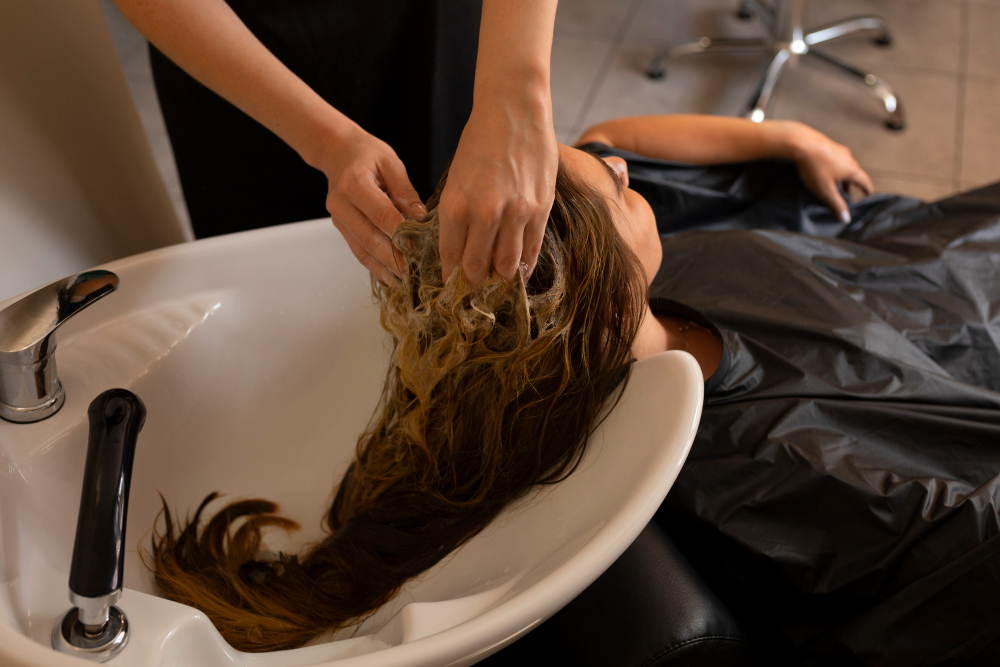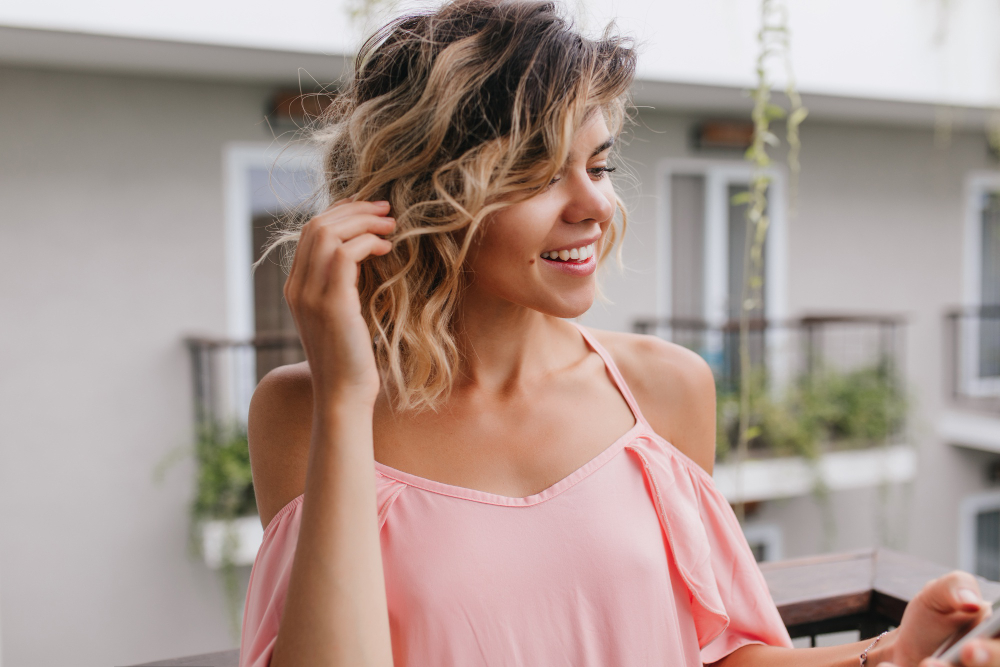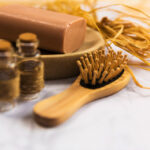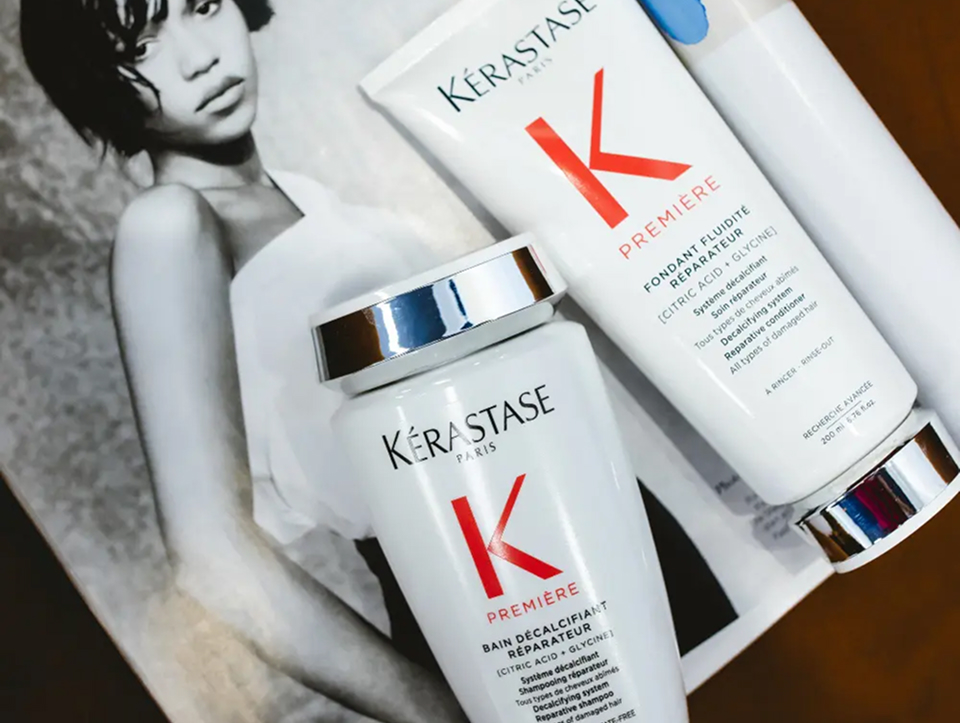Ever wondered what happens when your stylist says they’re adding lowlights? You’ve seen highlights everywhere, but lowlights are a little more mysterious. But how are lowlights done?
Today, we’re lifting the salon curtain so you can see precisely how lowlights are done, why they’re excellent for adding depth, and how you can maintain them at home.
Think of lowlights as contouring for your hair compared to highlights; they make your color pop with dimension and shine.
Whether you’re looking for subtle depth or dramatic contrast, understanding the process will help you make confident decisions and avoid DIY mishaps.
Step 1: The Hair Color Consultation

Before a single foil touches your hair, your stylist will sit down with you for a consultation. This is where your hair journey begins. Here’s what professionals consider:
- Base Color & Undertones: Your natural or current hair color influences which shades will look natural. Warm undertones pair well with warmer lowlight shades, while cool undertones complement ashier tones.
- Lifestyle & Maintenance: Busy mornings? Frequent swimming? Your stylist will suggest low-maintenance shades that still look polished and won’t require constant touch-ups.
- Desired Look: Do you want subtle depth or bold contrast? The stylist determines the number of lowlights to apply, their placement, and the techniques to use.
📸 Tip: Bring a photo of your desired look to your consultation, it helps your stylist match the exact vibe you want. This step is crucial for preventing unwanted results.
This step is crucial for preventing unwanted results. Studies show that personalized consultations lead to higher client satisfaction and more predictable hair color outcomes.
Step 2: Picking the Perfect Shade for You

Choosing the right shade is key. Lowlights are typically 2–3 levels darker than your base color. Professionals select shades that:
- Add depth without overpowering your natural color
- Prevent brassy or muddy tones
- Blend seamlessly with existing highlights or balayage
Shades are selected not just for visual impact but also for color science: darker pigments are more stable and reflect light differently, creating a multi-dimensional effect.
📸 Tip: If you’re considering DIY lowlights, pick shades close to your natural color to avoid harsh results.
Step 3: Sectioning & Application – The True Art of Lowlights

This is where the stylist’s artistry shines. Lowlights aren’t just “darker streaks” — they’re carefully placed to enhance movement and dimension. Application techniques include:
- Foil Lowlights: Hair is sectioned and foiled for precise streaks. Foils help separate colors, prevent bleeding, and intensify the contrast in certain areas.
- Balayage Lowlights: Freehand painting creates a softer, more natural blend, perfect for a sun-kissed shadow effect.
- Root Blending: Subtle lowlights at the roots prevent harsh lines and create a seamless grow-out.
Stylists may use a combination of techniques to ensure that lowlights look natural and blend seamlessly with your hair’s movement. Precision in sectioning and application ensures depth, avoiding muddy or patchy results.
📸 Tip: Ask your stylist how many foils or sections they plan to use. Fewer foils equals softer, natural effect; more foils equals higher contrast.
Step 4: Processing, Rinsing & Glossing

Once applied, lowlights usually process for 20–40 minutes, depending on the product and hair type. Here’s what happens next:
- Rinsing: Gently removes color while maintaining shine. Professionals often use lukewarm water to seal the cuticle and prevent fading.
- Toning/Glossing: Balances the color so lowlights don’t appear brassy or muddy. Glosses reflect light and enhance the dimensional effect, making hair appear healthier and more vibrant.
Processing times vary depending on the desired intensity and type of hair dye. Permanent lowlights usually deposit color without lifting the natural pigment, which reduces potential damage compared to highlights.
📸 Tip: A gloss treatment afterward adds reflective shine and softens any harsh edges, perfect for that “wow” factor.
Step 5: Styling, Shine & Aftercare Tips

After rinsing and drying, your stylist may apply:
- Shine serums or glosses for extra polish
- Heat protectants, if you plan to style with hot tools
Maintenance tips to extend your lowlights:
- Use sulfate-free shampoo and conditioner to preserve color.
- Deep condition weekly to maintain moisture and prevent breakage.
- Avoid washing your hair daily — over-washing can accelerate fading.
- Sleep on a silk pillowcase to minimize friction and color loss.
- Use a cool water rinse to seal the cuticle and protect vibrancy.
Professional lowlights can last 6–8 weeks with proper care, and touch-ups will ensure your color remains rich and dimensional.
DIY Lowlights: Can You Do Them at Home? (Spoiler: Not Always a Good Idea)
While it’s possible to apply lowlights at home, achieving salon-quality results requires skill and expertise. DIY mistakes can lead to:
- Streaky or uneven color
- Muddy or brassy tones
- Hair damage from overlapping color
📸 Tip: If you insist on DIY, start with a strand test and follow instructions carefully. Better yet, schedule a salon appointment for guaranteed results. Additionally, learn how to remove highlights if anything unexpected happens at home.
How Long Do Lowlights Take?
Expect about 1–2 hours in the salon from consultation to finishing touches. Processing alone typically takes 20–40 minutes, but the artistry in sectioning and blending is what makes it worthwhile.
📸 Tip: Bring a book, podcast, or playlist — salon time can be fun self-care time.
How to Maintain and Extend Your New Color

- Sulfate-free, color-safe products
- Deep conditioning masks weekly
- Limit heat styling
- Touch-ups every 6–8 weeks
📸 Tips:
- Sleep on a silk pillowcase to reduce color fading and frizz.
- A cool water rinse helps seal the hair cuticle and prolong the color.
Wrap UP: How Are Lowlights Done?
At Haste Urbn Hair Spa, our stylists specialize in creating custom lowlights that enhance your natural beauty. From consultation to aftercare advice, we ensure every client leaves with soft, dimensional color that turns heads.
Ready to transform your hair? Book a consultation today.
FAQ
What Are Lowlights?
Lowlights are strands of hair dyed darker than your base color, usually 2–3 levels down. They add depth, contrast, and dimension, giving your hair a rich, multi-tonal look. Unlike highlights, which brighten hair, lowlights enhance natural shadows.
How Long Do Lowlights Last?
Typically, lowlights last 6–8 weeks, depending on your hair type, maintenance, and growth rate. Regular touch-ups and color-safe hair care help maintain vibrancy.
Can Lowlights Damage Hair?
Lowlights are generally less damaging than highlights since they deposit pigment without lifting the natural hair color. Using professional-grade products and avoiding repeated chemical treatments reduces the risk of breakage.
Can I Combine Lowlights and Highlights?
Yes. Combining lowlights and highlights creates a natural, dimensional look. Lowlights add depth, while highlights add brightness — the contrast makes hair look fuller and more textured.
Are Lowlights Suitable for All Hair Colors?
Lowlights can be applied to blonde, brunette, red, or black hair. The key is selecting a complementary shade that enhances your base color and desired effect.









